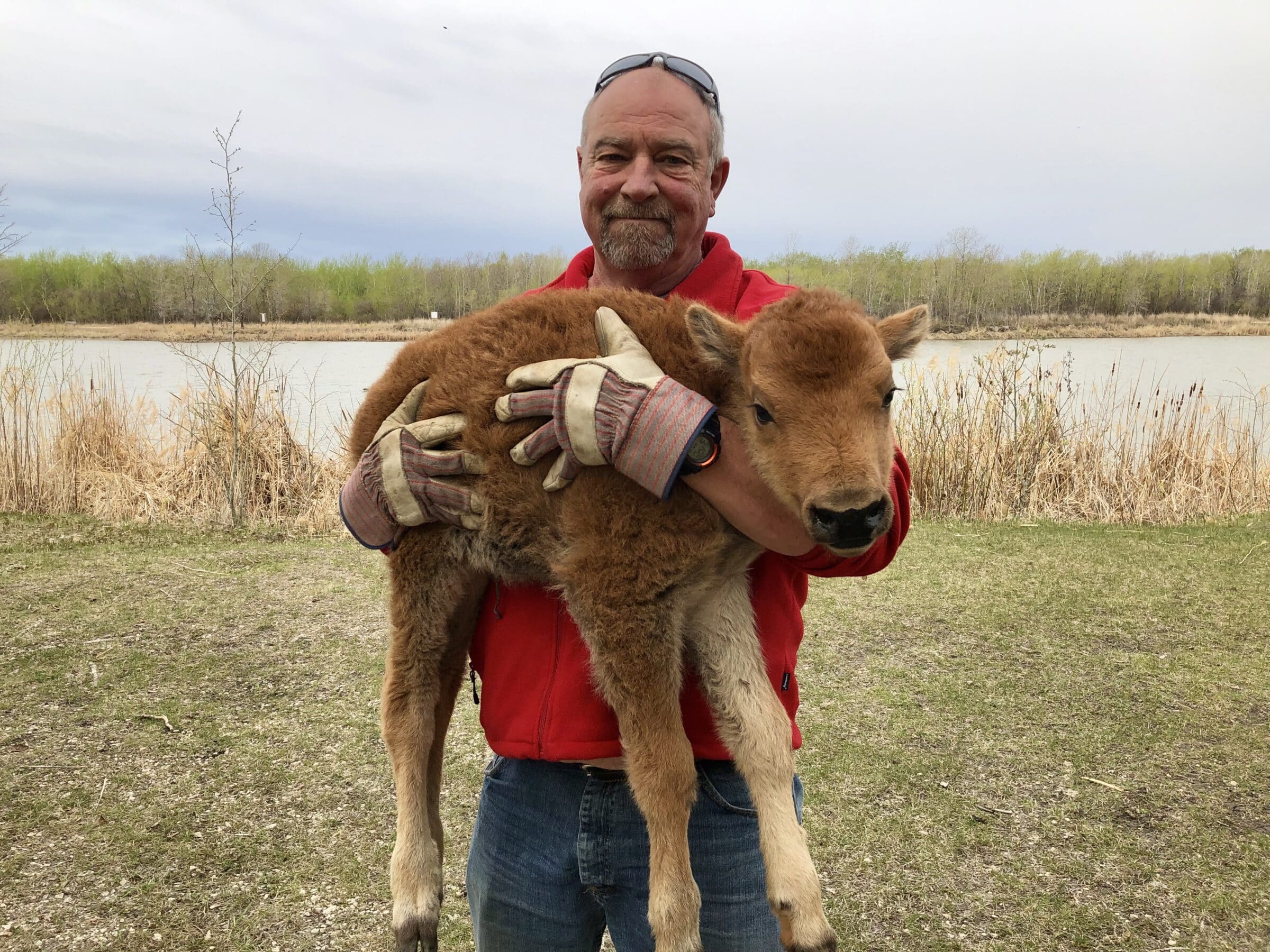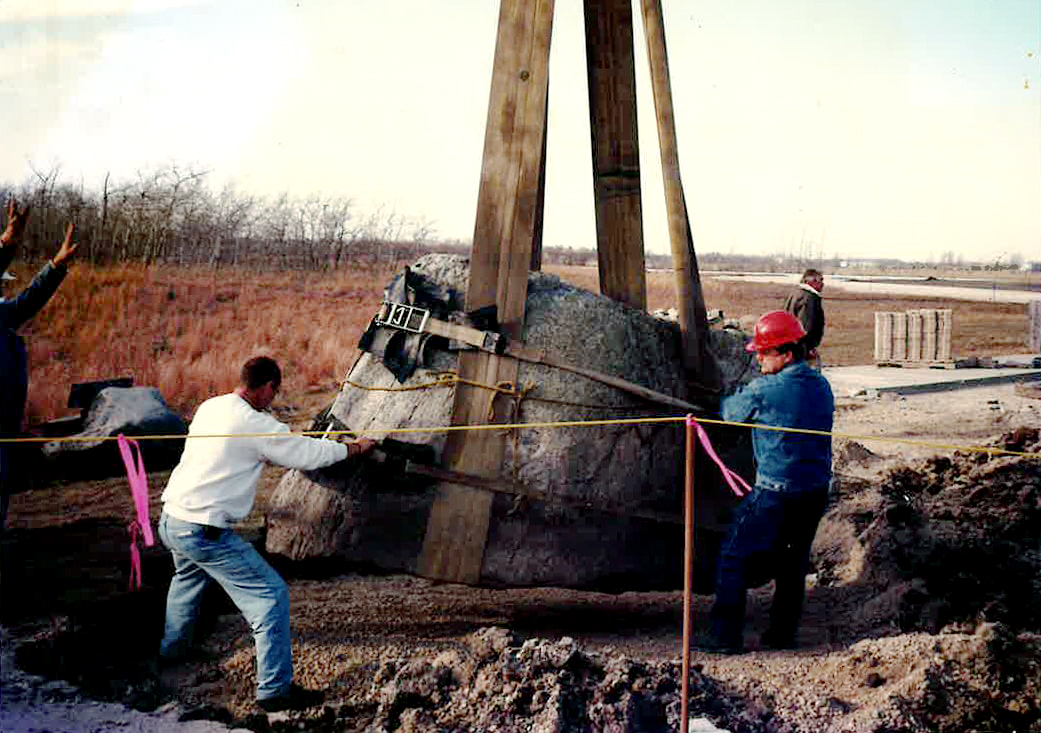From his friends and co-workers at FortWhyte Alive.
After more than 40 years serving as FortWhyte Alive’s Site and Wildlife manager, Ken Cudmore fed his last bison, ploughed his last snowy road and, with the humility he’s known for, quietly left to begin a much-deserved retirement.

In 1982, Ken graduated from a natural resource college in Lethbridge, Alberta. He then spent time working for the Canadian Wildlife Service and Manitoba’s Department of Natural Resources in several seasonal positions, banding ducks, conducting waterfowl population surveys and maintaining hunting checkpoints. “There’s lots of seasonal work in the summertime, but there’s not a lot of full-time jobs in that line of work,” he says.
One day he dropped off a resumé at the old Fort Whyte Centre for Environmental Education on McGillivray Boulevard. “I had no idea of the major expansion they were planning in the coming year.” Without realizing it at the time, Ken now says, “that was the best decision of my life.”
One year later, while working at a duck banding operation at Dauphin Lake, Ken’s Department of Natural Resources supervisor – a reference on that resumé – told him, “Some guy named Bill” at the new FortWhyte Centre wanted Ken to call him. (Bill Elliott would go on to serve for 35 years as FortWhyte Alive’s president and CEO until his retirement in 2022.)
After calling Bill from a pay phone at a gas station – no cell phones then – Ken says that he had a short interview and they both discovered “we had a lot in common, many similar interests and knew a lot of the same people.”
In September 1983, Bill hired Ken to be the Site Manager for the soon-to-open FortWhyte Centre.
Four decades later, Ken has put in a lifetime’s work with FortWhyte. When asked what he has planned for the future, he says, “Nothing big as far as retirement plans go – fishing (of course!).” and simply spending time with his family, which consists of Ilka, his wife of 20 years, and their 12-year-old daughter, Katharina. He also has two grown children, Shannon (40) and Tyler (38).
FortWhyte Alive would not be what it is today without Ken. As the second-ever employee hired, he shared over 40 years of care and devotion with this land. When Ken began work in September of 1983, FortWhyte was nothing more than “a gravel sidewalk out to a gravel parking lot. None of the trees were here; it was just a pile of mud with a beautiful, award-winning building on it,” he says, referring to the recently renovated Richardson Interpretive Centre.
Any visitor to FortWhyte knows that the picturesque urban green space is so much more than that now, but what they might not know is just how much of FortWhyte’s current condition is owed solely to Ken Cudmore.
“In the early days, I did everything from planting all these trees and seeding the grass that’s on the hills.” Ken was a one-man crew, giving life to the one-time cement factory and clay mine, performing every site duty himself because, as he points out, “there was nobody else to do it.”
It’s impossible to list all the tasks and roles Ken has undertaken during his decades with FortWhyte but, in the words of President and CEO Liz Wilson, “He’s a wildlife manager, urban planner, landscaper, planter, wrangler, rancher, farmer, plumber, engineer, electrician, builder, fisherman, bird watcher, weatherman, snow clearer, tractor driver, protector, mover, storyteller, water steward, biologist, detective, and one heck of an incredibly talented, intelligent, kind and loyal man.”
Ken’s time caring for the plants, trees, lakes, and wildlife of FortWhyte Alive means that visitors have been able to enjoy the property, and countless students have been able to experience vital hands-on environmental education. His contributions are immeasurable. He was at FortWhyte for the construction of the Alloway Reception Centre and supervised the move and placement of the Buffalo Rubbing Stone from its original location near Manitou; he saw the expansion of the property to Sterling Lyon Parkway; he saw the establishment of the world’s largest urban bison herd and has cared for it since 1999. Most importantly, he has been instrumental in the transformation of FortWhyte from a desolate industrial area to a now-lush and full-of-life natural environment.
Anyone who’s met Ken also knows he loves to share his stories – often colourful yarns – and when asked what stood out during his time at FortWhyte, he recalls hitchhiking his way across Winnipeg in the aftermath of 1986’s historic blizzard so that he could tend to the waterfowl and move them inside to safety. Travelling solo, without the help of his usual migration helper, his beloved Labrador retriever, he traversed the snow-crippled city from North Main Street to the current site of Buffalo Crossing on McGillivray Boulevard. “I climbed over the fence, and I’m walking through this beautiful, incredible, winter wonderland, just waist-deep snow in places, because I had to catch those ducks.”
“It’s pretty amazing,” Ken says when asked how it feels to have had such an impact on FortWhyte’s growth. “I’ve never really considered it a job – it was more of a lifestyle. It was almost like my own farm or my own ranch, and when I thought it was time to pump some water out of this lake, I just went ahead and did it, or if I thought it was time to cut the hay, I just went ahead and did it, and it didn’t matter if it was a Friday or a Sunday.
“I always said I can’t believe I get paid for it. To do what? Look after bison, fill bird feeders, raise ducks and catch fish for the aquarium?”
While Ken wonders how he got so lucky to work at FortWhyte, we’re wondering how we lucked out having him.

Ken, we will miss you, but we know this isn’t the end of your FortWhyte story.
While you’re out enjoying your retirement with your family and going fishing, we’ll be here passing on knowledge because of you. Your passion has inspired us all and we’ll do our best to take care of this land just as you would have.
We’ll be showing kids the fish you caught to stock the aquarium, telling your stories over coffee, guessing which day the first goose of the year will arrive, and celebrating everything that happens at FortWhyte because of you.
We love you. We’ll miss you. Don’t be a stranger.




